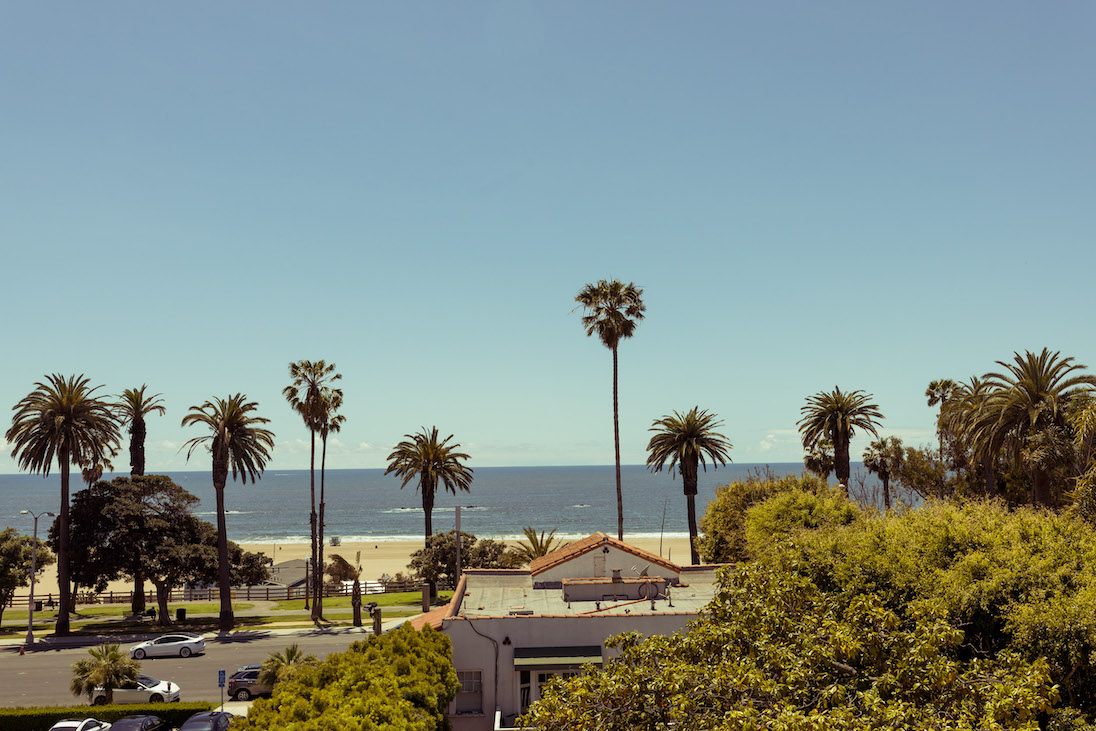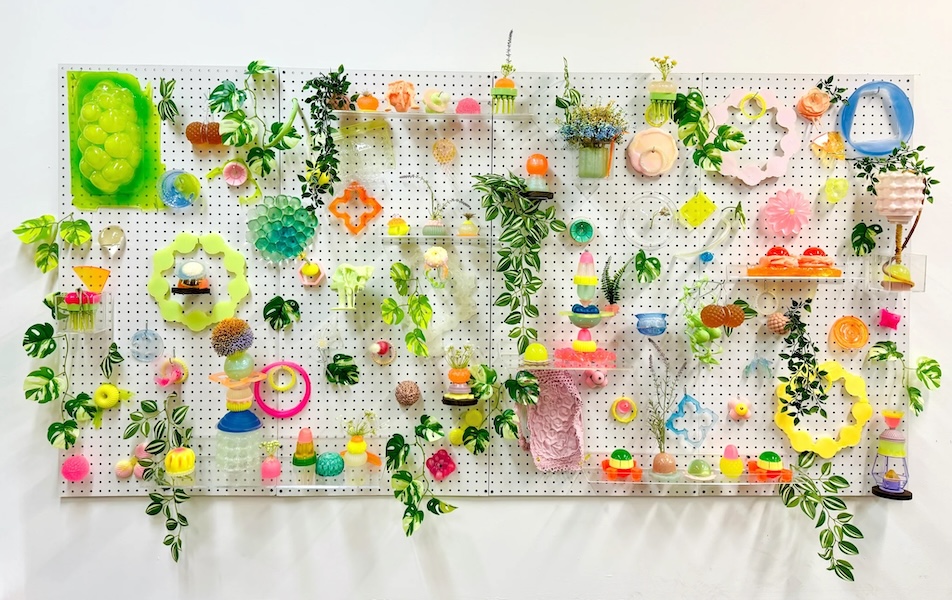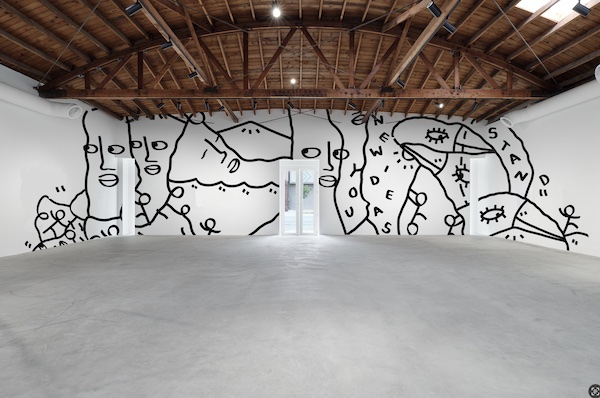Nick Mathers has transformed the value of a laid-back lifestyle into a thriving portfolio of businesses. For the Australian hospitality guru behind the Wish You Were Here (WYWH) group, that first started in New York over 20 years ago when he opened Ruby’s—a cafe that embodies a quintessentially relaxed Australian atmosphere and pairs it with cozy seating, a killer menu, and impeccable service.
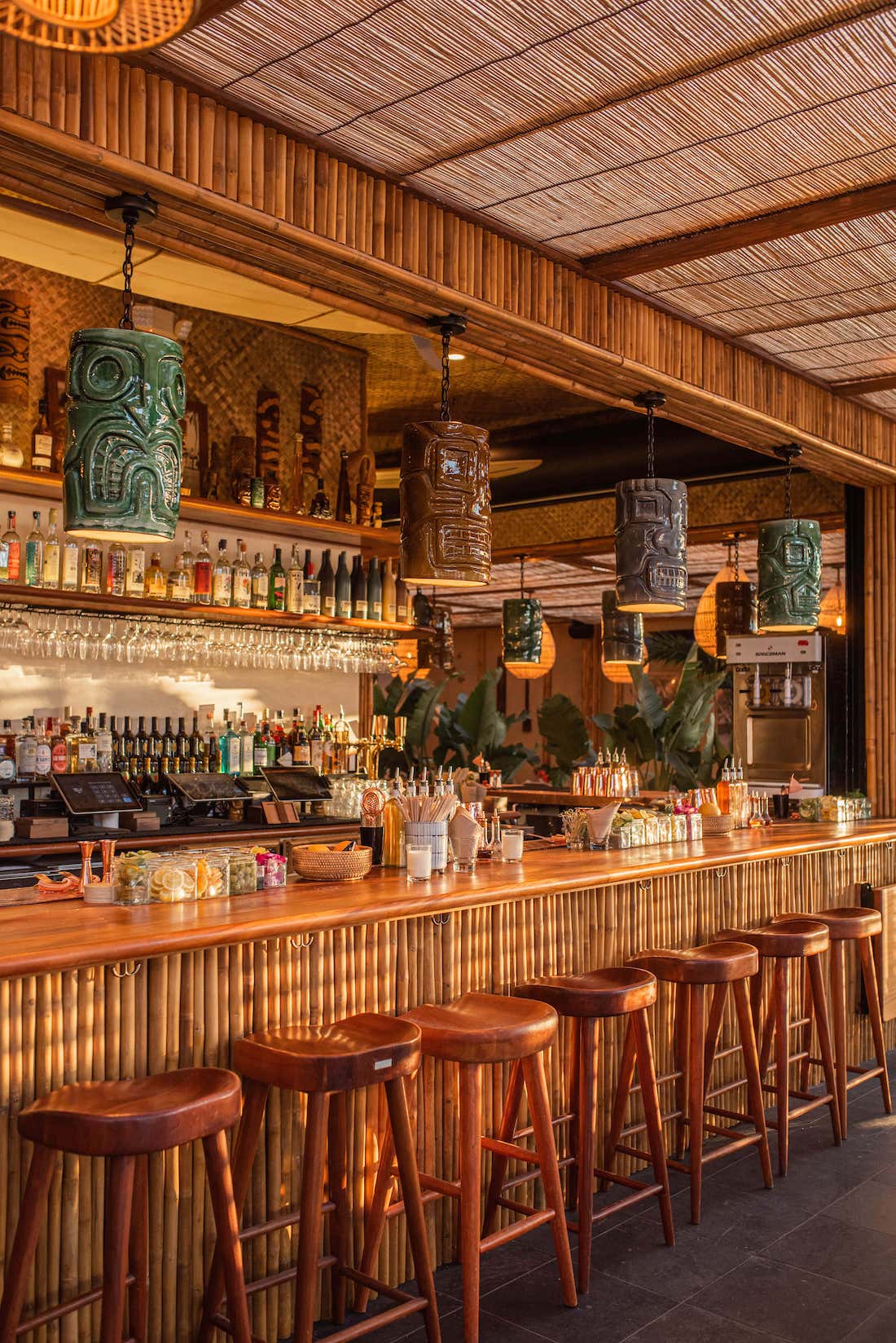
Belles Beach House, photo by Laura Huertas, courtesy of Wish You Were Here Group.
Since, WYWH has opened more spaces in New York, including Dudley’s and another outpost for Ruby’s, as well as other concepts in Las Vegas and Los Angeles. For those in town this week for Frieze Los Angeles 2024, WYWH spots Élephante, Belles Beach House, and Eveleigh are on the top of everyone’s “must” list. Favorites to locals, too, each space boasts unique charm and flair, from Hawaiian-inspired decor to sharable, savory bites.
Whitewall spoke with Mathers about WYWH’s massive evolution, what spaces he’s opening next, and why it’s more important than ever to slow down and enjoy the ride of life.
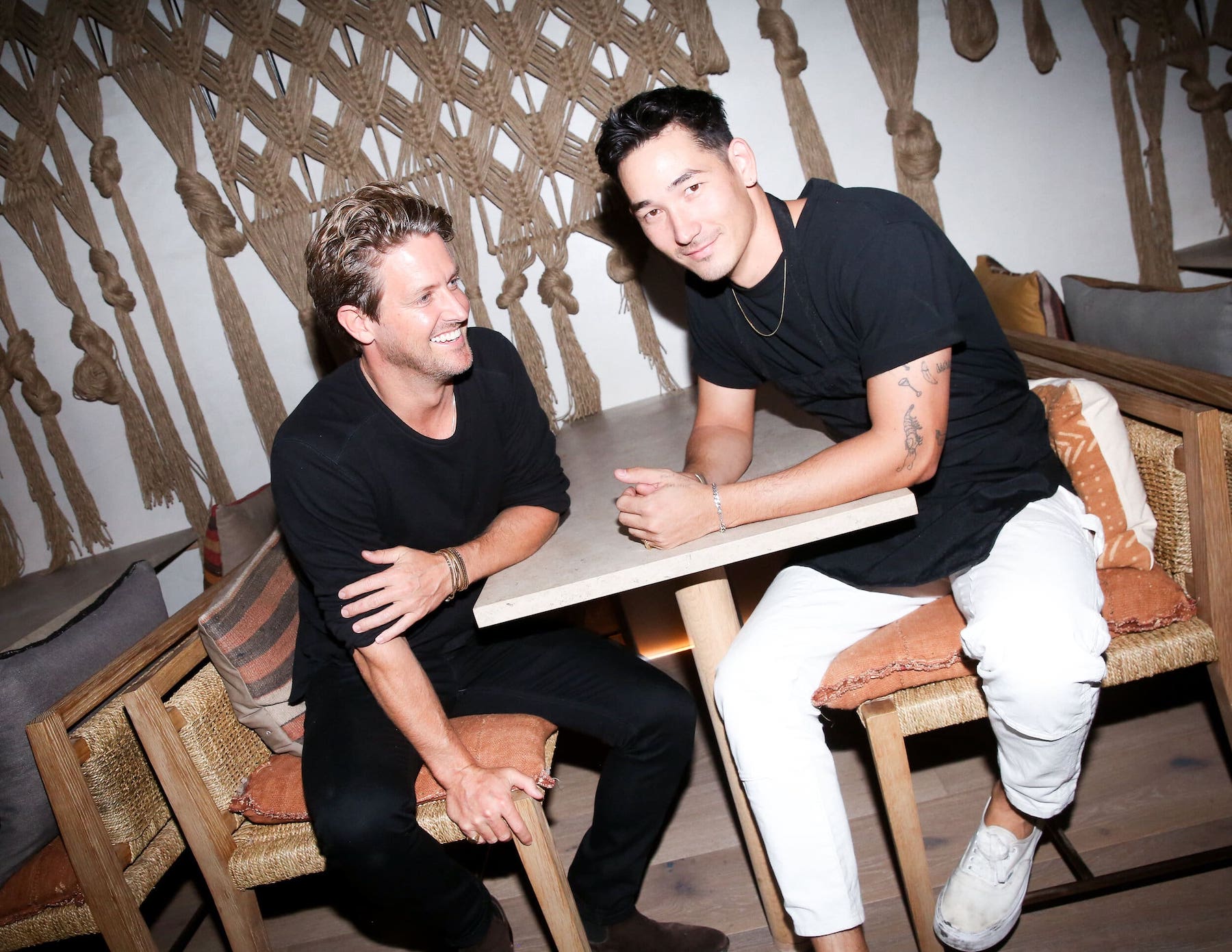
Nick Mathers and Culinary Director Thomas Lim, courtesy of Wish You Were Here Group.
Wish You Were Here Hospitality Group
WHITEWALL: WYWH is a hospitality group tied to beach culture—particularly your upbringing in Northern Sydney beaches in Australia. Tell us a bit about that environment and the details that you wanted to pull from for inspiration for WYWH’s spaces:
NICK MATHERS: When I first moved to New York, I wanted to bring a small piece of Australia and its warm, laid-back Australian hospitality to the city, something that I felt was missing. I wanted to create a place where you’d come inside and it would take you away from where you were. The design and aesthetic of each of our concepts are intended to transport you for a moment in time to somewhere else. That’s been the ethos behind Wish You Were Here Group since day one—we want people to feel like they’re on vacation when they come to our spaces. Even our service has a bit more of a relaxed energy. We always want to make sure we offer an inclusive style of service. As we grow, we want the locality and comfortability to remain, yet still be able to offer that escape guests are looking for.
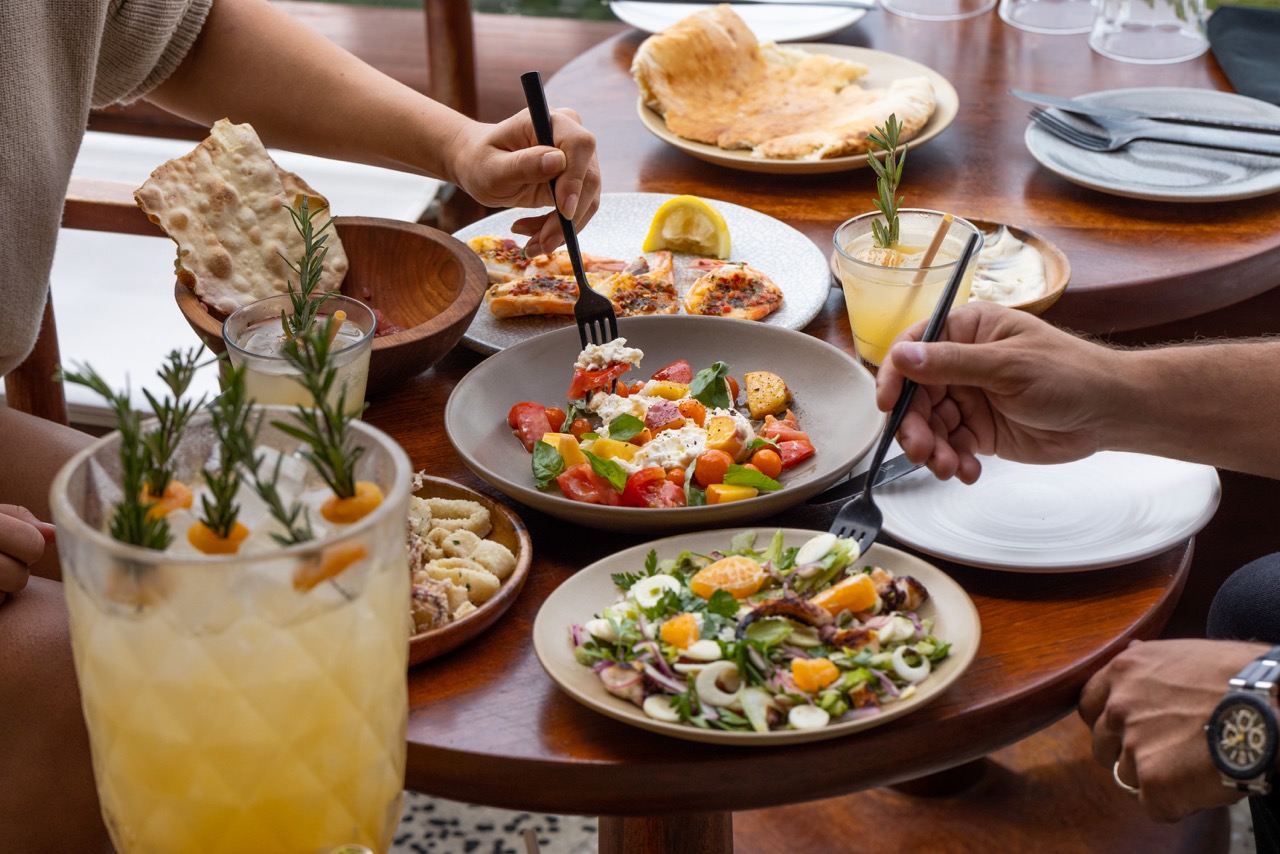
Photo by Jakob Layman, courtesy of Élephante.
WW: When you first opened Ruby’s in NoLIta, it was just after the tragedy of September 11 in New York City. Do you see similarities in the post-pandemic world? Do you feel people are craving something new, or fresh?
NM: This was such a different time from the post-pandemic world, as it was so specific to New York. However, I do see some similarities.
Coming from Australia to New York City and starting a business back then, New Yorkers were so grateful for our support in their city, especially following such a tragic time. New Yorkers are so true to New York with their unwavering loyalty to their city and embraced us wholeheartedly, instantly making me feel like I was a part of it from the get-go. Post-9/11 was such a tough and unique time. Everywhere we went, it felt like a family in a way, especially in the close-knit neighborhood of NoLita. It reminded me of where I grew up in Australia. It was a place where everyone knew each other—the postman, the local deli owners, restaurateurs, retail owners—it was a place where collaboration thrived. The owners of iconic New York venues like Freeman’s and The Box used to meet at Ruby’s before they opened up their own spaces, and they would work on their plans over coffee and breakfast. New York really was a city that was having a rebirth after such a tragedy.
In the post-pandemic world, we saw hospitality take on a new significance as people rediscovered how much they needed restaurants and even connection in general. People were so grateful to be out, sitting and talking, which felt similar to after 9/11. They previously took for granted going out with friends to a place where you can eat, drink, chat, and laugh and started to appreciate more than just the food—they valued the places that provided the full experience.

Courtesy of Wish You Were Here Group.
From Australia to New York and Los Angeles
WW: From service and design to the menu items itself, everything WYWH does is intended to replicate carefree beachside living. How important is it to continue this relaxed vibe in today’s increasingly complex and stressful social landscape?
NM: Today, more so than ever, we need more places to escape to. As many people spend so much time at home, not only living but working, the idea of being at home all the time blurs the lines between comfort and stress. Because of this, we spend so much time on social media, our phones and computers, using it as a different type of escape. The need for tangible escapes is so important. At the same time, we still want to be at the forefront of reinventing the wheel in a relatable, non-pretentious way. With our restaurants, our goal is to offer that laid-back escape right in your neighborhood. You don’t have to hop on a plane to experience it — we bring that vacation-like atmosphere to you, providing a refreshing break from the virtual world. These physical experiences ground us in reality, providing authentic and valuable moments outside of the digital world we may find ourselves in too frequently.
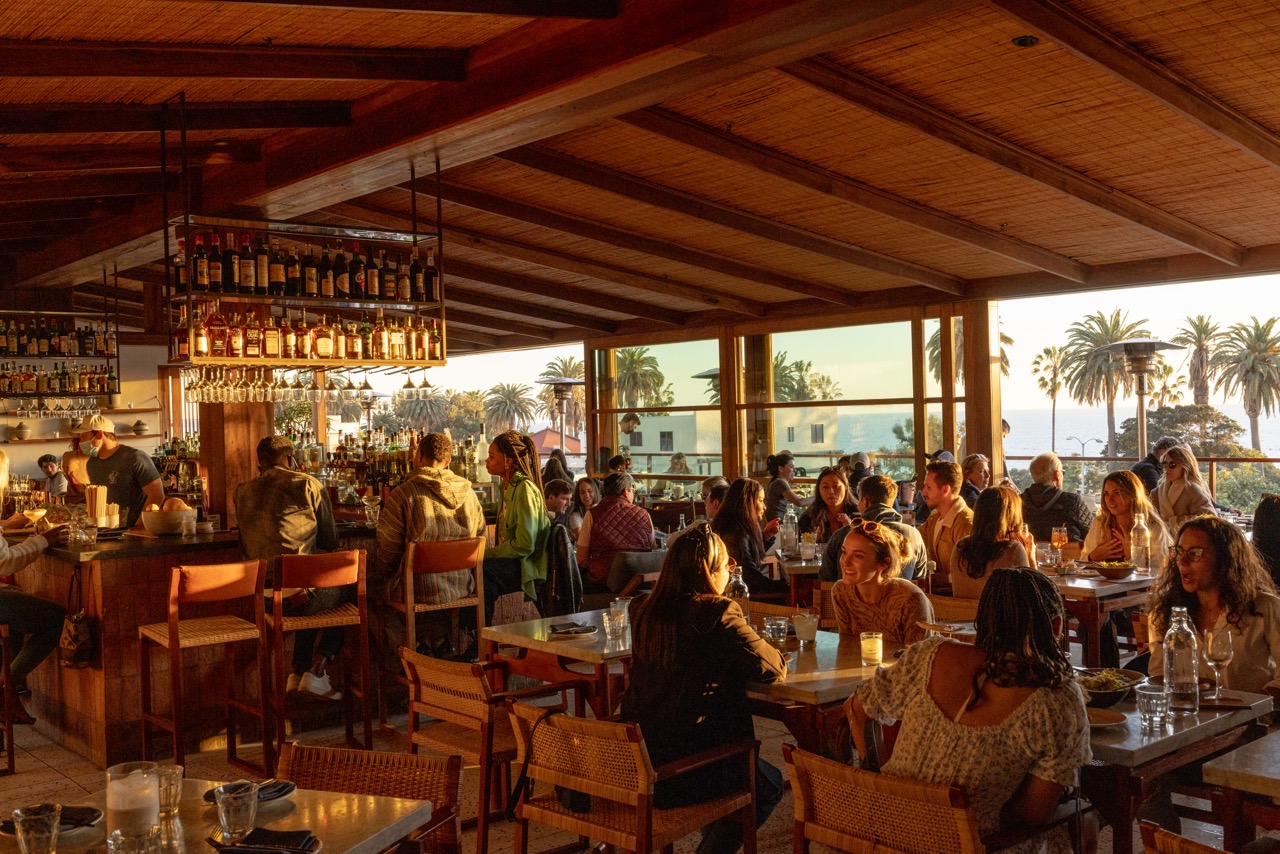
Photo by Jakob Layman, courtesy of Élephante.
WW: You have a collection of spaces across the US, in cities like LA, NYC, and Las Vegas—as well as expansion plans for Scottsdale, Dallas, and Laguna Beach. Why these cities? What does having restaurants in these cities say about your idea of gastronomy’s future?
NM: Operating in our current cities of LA, NYC, and Vegas offers a saturated and dynamic environment where business can thrive, however, it can be tough. That being said, being open in major cities like New York City and Los Angeles has allowed us to open globally in places such as South Korea. Seeing the popularity of Little Ruby’s in South Korea, with lines out the door, is truly surreal and underscores the universal appeal of our offerings. It’s amazing to have brands that are relatable to people on the other side of the world.
Our expansions into Scottsdale and Dallas present exciting opportunities for us. There’s a lot of excitement about restaurants in these areas, with a genuine appetite for new and creative experiences. It’s time to offer something fresh, particularly in these cities. The larger spaces and more flexible construction options in these cities allow me to fully bring my design vision to life. There are fewer limitations, enabling us to create these special spaces that truly resonate with our guests. In Dallas, I have a standalone, ground-up building that I get to design and have the opportunity to work with some amazing architects there. It’s always been a dream of mine to create a standalone, ground-up restaurant. In Arizona, we’re part of such a populated area at Fashion Square with notable businesses around us. For example, Élephante will share a wall with Hermes, a very recognizable brand.
There was definitely a huge post-pandemic migration to places like Arizona and Texas as well. With people relocating to these cities already knowing our brands, they seek that sense of familiarity in their new surroundings. I’m very eager to bring our existing concepts that people know and love, such as Élephante and Little Ruby’s Cafe, to these communities. It’s an exciting journey, and I believe the future of gastronomy lies in embracing these new horizons ahead.
Expanding the Hospitality Group Into Hotels
WW: Most of your locations are standalone F&B spaces, although Kassi Beach House in Nevada, for instance, is inside of the Virgin Hotels Las Vegas. What are your thoughts on the possibilities of outside restaurants operating within hotels? What does it offer? Any limits or possibilities that aid or detract? Will you do more of these?
NM: Our vision for the future is to expand Wish You Were Here into this realm of hospitality by creating hotels ourselves, complete with F&B units. This represents the next step in our evolution —a move towards owning and operating our own hotels (Wish You Were Here or Élephante branded). By doing so, we can craft creative control over the entire guest experience, from architecture and design to dining and service. While we’re always open to opportunities, our primary focus remains on building standalone brands and eventually our own hotels.
In regard to outside restaurants operating within hotels, for some brands it really works, especially when there’s strong synergy between the restaurant and the hotel brand. It’s important that there’s cohesion, as it enhances the overall guest experience. Kassi Beach House in Nevada, for example, thrives within the Virgin Hotels Las Vegas, thanks in part to its unique setting by the pool and the inviting hospitality of the Virgin Hotels brand.
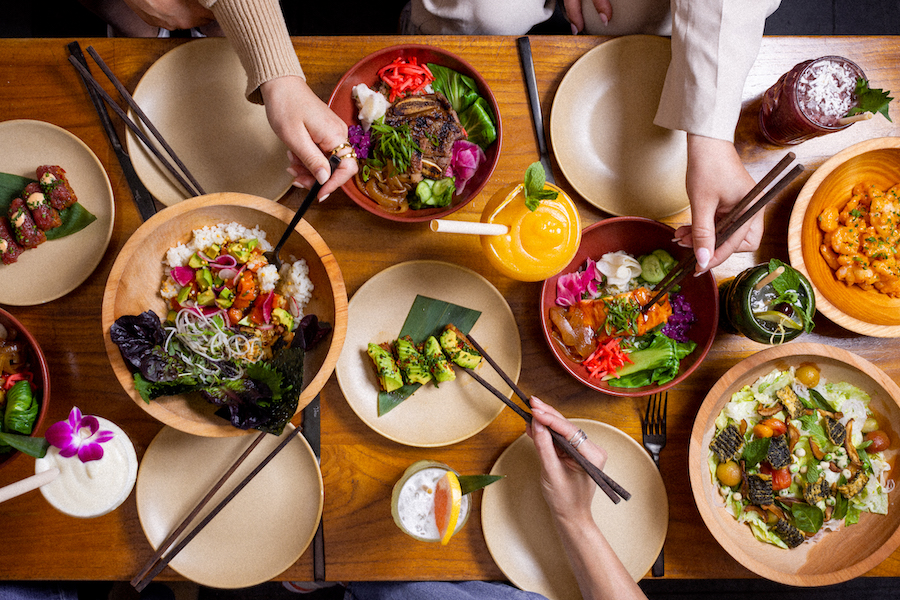
Photo by Jakob Layman, courtesy of Belles Beach House.
WW: In an interview with Forbes late last year, you mentioned you oversee 1,700 staff across his 12 U.S. restaurants and that you were opening six more venues. Can you tell us about those?
NM: Last year, we opened Little Ruby’s Cafe in the West Village and our new Mexican concept, Leoncito in Las Vegas. Looking ahead, we’re thrilled for the upcoming opening of Élephante in Scottsdale this fall, alongside 3 new locations in Dallas coming soon. Our aim is to make a significant mark in both Dallas and Arizona, with potential plans to introduce more of our concepts in Scottsdale.
The decision to expand into cities like Scottsdale and Dallas was influenced by several factors. As I mentioned before, the country saw a huge migration in states like Arizona, Texas and even in Florida as a result of the pandemic. Additionally, the business environment in these cities is highly conducive to growth, with more flexible costs for construction and setup compared to larger metropolitan areas. When we were first approached to bring our brands to these locations such as Scottsdale Fashion Square and developments in Dallas, we identified a significant gap in the market for our offerings.
Over the years, our brands like Élephante and Little Ruby’s have garnered strong guest loyalty with Élephante open for over 5 years in Santa Monica and Little Ruby’s Cafes open throughout Manhattan—the first of which opened over 20 years ago. Our brands resonate with both locals and tourists, drawing visitors from across the country and around the world, and we want to build the same notoriety and loyalty in these new cities.
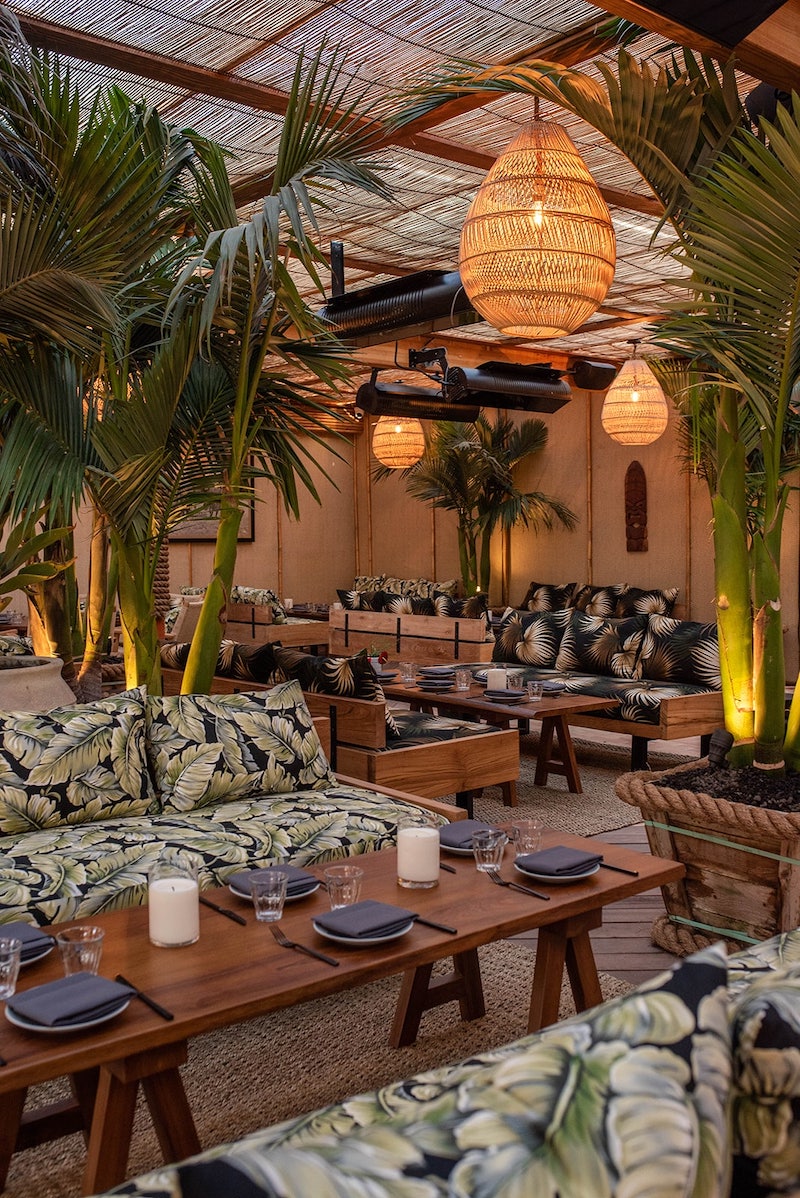
Belles Beach House, photo by Laura Huertas, courtesy of Wish You Were Here Group.
Future Plans for Wish You Were Here Group
WW: There’s a rumor WYWH will IPO. Is that true? What would be the deciding factors that you’re working out behind the scenes?
NM: We do not have any intention of going public and we are not pursuing an IPO. Eventually, we would like to have a private partner or partners that align with our vision, enabling us to grow globally and venture into new, exciting projects like hotels.
WW: You also mentioned you wanted to build a brand that could also encompass homeware, or build hotels, like Six Senses or Aman—two of my favorite hotel brands. What is your vision for this? Why do you look up to these brands?
NM: When I travel, I find myself staying at places like Six Senses or Aman. I love the sense of the familiarity they bring, but I’m also inspired by how each location ties its unique identity to its surroundings. I want to feel deeply connected to the place I’m visiting. This feeling has always resonated with me and is something I strive to incorporate into our brands. It’s essential for our establishments to immerse guests in the local culture, ensuring they don’t merely feel like they’re at just any Élephante, but rather at the Scottsdale Élephante or the Dallas Élephante.
Design has always been an intrinsic part of my life. My mom was an interior designer so I was always sitting amongst piles of design books and magazines from a young age. I used to flick through them all the time and developed a keen eye for aesthetics. I also received my Bachelor of Arts – I majored in Art History and Theory at the University of Sydney. Majoring in the Arts provided me with a formal foundation, which I explored greatly, even working in the film industry for a bit.
Designing a house from the ground up in Australia was a defining moment that solidified my love for design, ultimately leading me to New York and the opportunity to bring my vision to life through Ruby’s. Now I lead the design of all our restaurants, design my own homes, and help others design their homes too.
For our restaurants, I’m hands-on throughout the entire design process from the conceptual stage to the intricate details. Whether it’s developing mood boards, collaborating with architects, or meticulously planning every aspect of the space, I’m integral to every layer of design. Even when it comes to interiors, I’m involved in selecting materials, designing furniture, and ensuring every element aligns with our vision. This comprehensive approach to design is why I’m looking forward to hopefully venturing into homeware and hotels in the future.
Drawing inspiration from diverse sources, I find myself delving into old travel photos and magazines, exploring social media platforms like Pinterest and Instagram, and curating mood boards to encapsulate the essence of our design vision. It’s a process that often begins chaotically, with a flood of ideas and inspirations, but gradually comes together into a cohesive vision. Balancing color palettes, materials, and design elements is always a push and pull, but it’s this meticulous attention to detail that ensures we strike the right balance and appeal to a wider audience.
Beyond design, I play a pivotal role in selecting the locations for our venues. I evaluate demographics and the surrounding area to ensure our restaurants align with the community and cater to our target audience. Spending ample time in prospective areas like Dallas and Scottsdale allows me to become familiar with the local culture, gauge the vibe and determine if it resonates with our brand ethos. I’m drawn to places that resonate with me personally — a principle that guides our expansion strategy, as we aim to create spaces where we ourselves would want to visit.
As I mentioned before, partnering with private investors in the future who share this vision could enable us to explore new ventures such as hotels or homeware, expanding our brand’s reach while maintaining the values that are important to us.
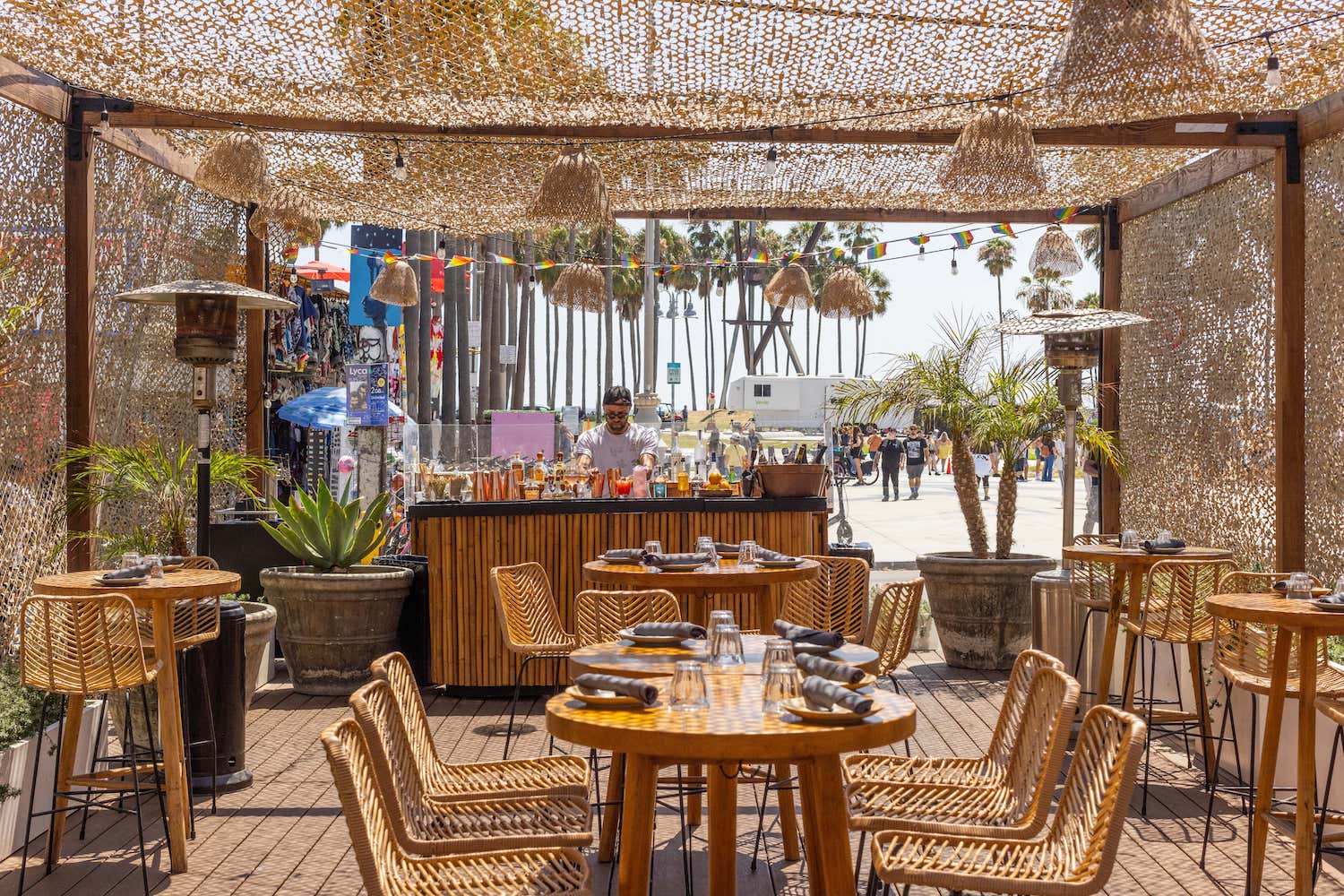
Belles Beach House, photo by Jakob Layman, courtesy of Wish You Were Here Group.
Rituals to Live By
WW: Tell us a bit about where you live and the ethos you subscribe to. Do you have any rituals that play into the larger picture of how you view life and work?
NM: I currently live between California and Colorado. My routine definitely involves both immersing myself in nature to recharge and exploring big cities to stay inspired. The mountains and ocean are integral to my well-being, while travel keeps my mind engaged and relevant. I often travel to major cities like London, Paris, and New York, as they continually fuel my creativity. Specifically, places like London hold a special significance for me, having spent some of my childhood years there.
Personally, I enjoy skiing in Colorado’s mountains and surfing in LA. In LA, I love to go up to the northern areas like Point Dume and the beaches near Leo Carrillo closer to Ventura — I like being slightly removed from the city while still remaining nearby. One of my favorite things to do is hike along the oceanfront trails at Charmlee Wilderness Park.
When I’m in New York, I always love going to Frenchette. Every time I’m in New York, that’s my go-to. I love the energy, the food, and the people there. It feels like the new-age version of spots I used to frequent in the city back in the day.
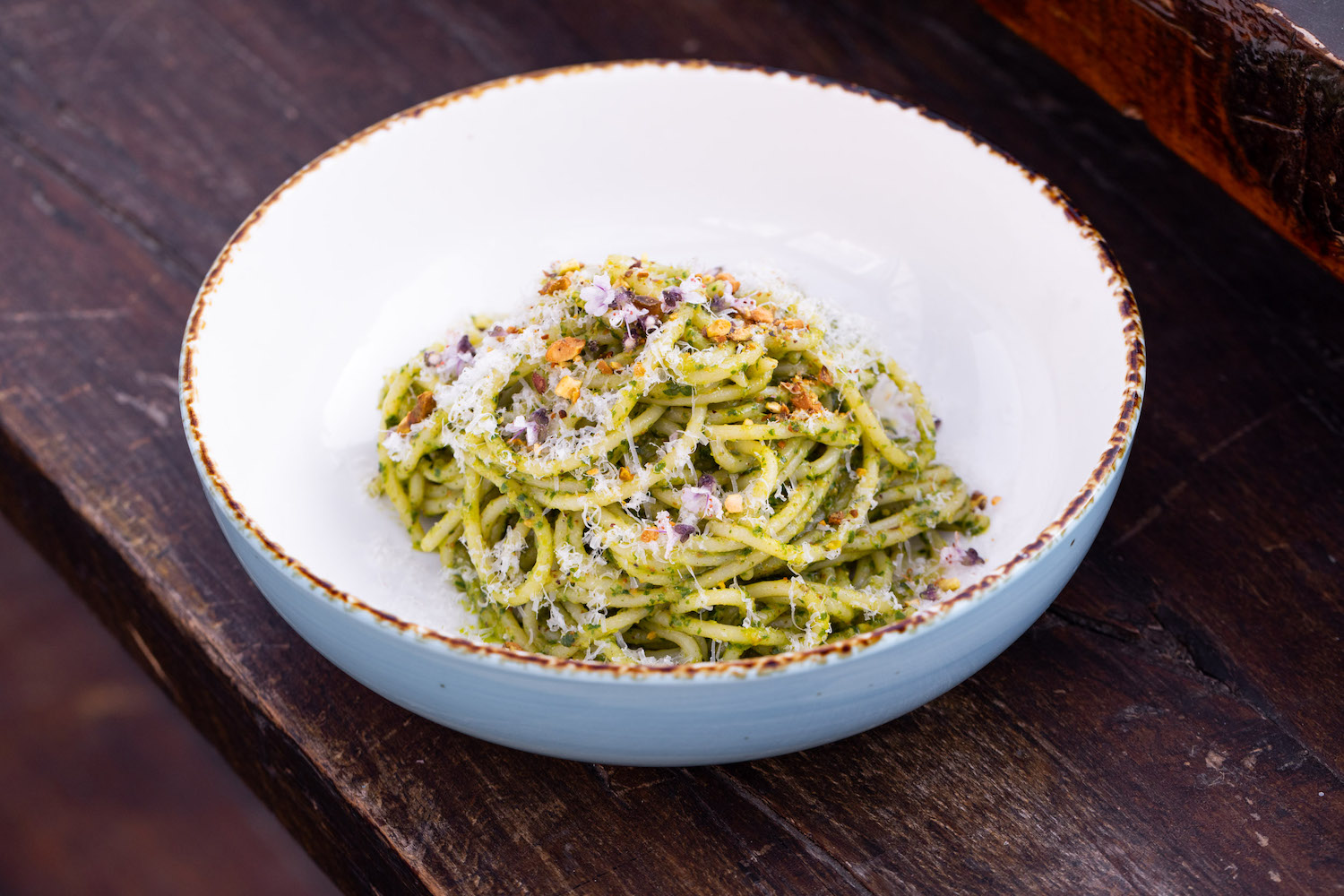
Photo by Jakob Layman, courtesy of The Eveleigh.
WW: For those in LA for Frieze Week, where do you recommend they go or order?
NM: I actually attend Frieze Week myself every year and will again this year. I always end up discovering and purchasing special pieces. For those visiting, aside from dining at our restaurants (Élephante, Belles Beach House, and Eveleigh), I’d recommend Capo, an Italian restaurant in Santa Monica, Gjusta in Venice for a cafe vibe, and Chez Jay for a dive bar vibe.
WW: What are you working on now/next?
NM: Right now, we’re working on Élephante Scottsdale opening this fall. We’re always working on future projects behind the scenes, including bringing more concepts to Dallas and New York City soon.


